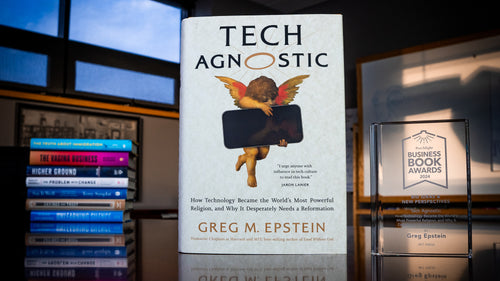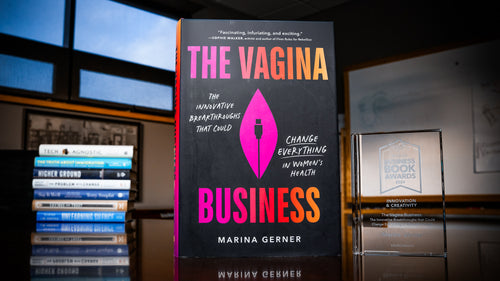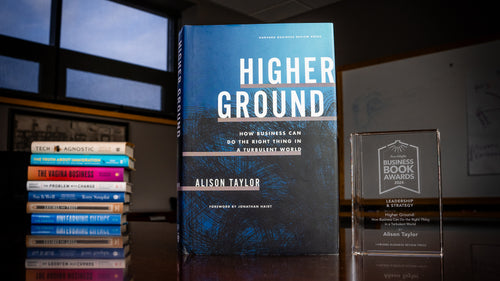How the West Was Lost - An Excerpt

In this story, Jimmy Stewart doesn't get the girl and Gregory Peck never makes a dime gambling. The book is about the economic supremacy of the West, how it was achieved and why it is currently in decline. Unlike the many scare-mongers out there, however, Dambisa actually offers reasonable solutions to arrest that decline. In the excerpt below from the opening of the book, "Once Upon a Time In the West" (which does not even mention Henry Fonda or Charles Bronson), Ms. Moyo discusses "The Pillars of Growth," the great possibilities at the confluence of capital, labor and technology, and why "an idea has a marginal cost of zero."
The Pillars of Growth BY DAMBISA MOYO
Much ado has been made of the seemingly inevitable economic decline of the industrialized West—the United States, in particular—and the 'rise of the rest,' led by China. While most of this debate has tended to centre on historical patterns of imperialism and strategic and military considerations, canonical models of economic growth also offer a framework that highlights just how the West continues to misallocate the key ingredients necessary for long-term sustainable economic success and growth, to its detriment.
The evolution of growth theory has been a fascinating one, and one that cannot adequately be expounded in the short space that this book allows. An earlier incarnation in the economics literature began with the Harrod-Domar idea, which identified growth as solely a function of one input—capital.
In 1956, Vobert Solow, an American professor at the Massachussetts Institute of Technology, built on this one-input model by demonstrating that labour too played a crucial and determinate role in delivering growth. For "his contributions to the theory of economic growth," Solow was awarded the Nobel Prize for Economics in 1987, and for a time the Solow model, which saw growth as determined by capital and labour, remained the backbone of the macroeconomic growth literature for many years.
However, it must have come as something of a surprise that when these seemingly logical explanations for growth were subjected to empirical scrutiny, they accounted for only 40 per cent of a country's economic prosperity. There was a missing component; and a large one at that. This hitherto unidentified factor—the 60 per cent—has come to be known as total factor productivity, a catch-all phrase which encompasses technological development as well as anything not captured by the capital and labour inputs, such as culture and institutions. Thus canonical economic models point to three essential ingredients which determine economic growth: capital, labour, and total factor productivity. These are the pistons which drive the cylinders of economic growth. Finely tuned and working in unison, they motor an engine of near limitless power.
Perhaps nothing illustrates the might, the sheer potency, of these three components coming together better than the American moon landing in July 1969.The gauntlet thrown down by President Kennedy in 1961, to land a man on the moon by the end of the decade, could not have been more ambitious. Goaded by the seemingly more adept Russian space programme, which was first with an object—Sputnik-I (1957)mdash;first w th a living creature—Laika the dog (1957)and, of course, first with a man—Yuri Gagarin (1961)—Kennedy captured the spirit of the times in his famous words: "W e choose to go to the moon in this decade and do the other things not because they are easy, but because they are hard."
The history of the Apollo programme, its personalities, its spirit of adventure, remains one of the most celebrated moments in American (and world) history, and rightly so. But it is also the supreme example of the confluence of capital, labour and technology, each at the height of its powers and all of them working as one. America had the capital, it had the labour, and, ultimately, it had the technology. The facts and figures speak volumes.
In terms of capital, the costs of the Apollo project were astronomical. The annual budget of the National Aeronautics and Space Administration (NASA) increased from US$500m in 1960 to a high point of US$5.2bn in 1965$mdash;representing 5.3 per cent of that year's federal budget (5 per cent of today's U S budget would be around US$125bn). As a reference point, the Vietnamese war is thought to have cost around US$111bn (US$686bn in 2008 dollars). A ll told, the final cost of the Apollo project was between US$20bn and US$25bn in 1969 dollars (or approximately US$135bn in 2005 dollars).
Cash was only one component of the Apollo challenge. To realize its goal America had to draw upon the two other essentials: labour and technology. Luckily for America, it could.
To this end, a huge army of personnel were enlisted. By 1966, NASA's civil service list had grown to36,000 people from the 10,000 the agency employed in 1960. NASA's space programme would also require that the agency call upon thousands upon thousands of outside technicians and scientists. From 1960 to 1965 individuals working on the programme increased by a factor of 10, from 36,000 to an astonishing 376,000. The more critical point here was not that NASA needed to find such a vast amount of talent, but rather that it could. And where the talent did not exist, NASA created it. Private industries, research institutions and universities provided the majority of these personnel. It was this labour force that would invent and build the technology which would catapult America to the forefront of the space race and put Neil A rm strong and Buzz Aldrin on the moon—an accomplishment often cited to this day as the greatest technological achievement in history.
The technological feats of the Apollo programme were truly awe-inspiring. While marveling at the wonder, the approximately one fifth of the world's population that watched the live transmission of the first Apollo moon landing would have struggled to appreciate the phenomenal behind-the-scenes technological brilliance that had made this possible.
The idea of a lunar landing had been through ten years of trials, prototypes and numerous setbacks in order to make it a reality. From the huge Saturn rockets that had the power to lift a US destroyer into space, to the lunar module that landed two 150-pound men on the moon, and to each of the hundreds of thousands of components and parts that had to be researched, designed, built and tested, the apparatus of the Apollo was breathtaking in its vastness and complexity.
It did not stop there: the programme spurred advances in many areas of technology peripheral to rocketry and manned spaceflight, including avionics, telecommunications and computing, as well as in the fields of engineering, statistical methods, and civil, mechanical and electrical engineering. This is the power of ideas. Beyond the immediate machine or contraption the spill-over effects are the real gains of technology. And because once an idea is out it can be used and improved upon by anyone, anywhere, an idea has a marginal cost of zero.
Even if it had wished to, no country other than America had the capability—the capital, the labour, the technology—to plan, to develop and to execute the moon landing. Russia was not so far behind in space investment, hence the emergence of the Space Race, but over time it became clear that it would not be able to compete. The absence of any one of these elements would have meant that America couldn't have achieved its lunar ambitions. The point is, with these three factors in place the implausible becomes possible; economies, and therefore countries, become forces to be reckoned with. Yet if they are misused, misallocated, a country's economic decline is not just on the cards but accelerated.
What is clear, and what [How the West Was Lost] will demonstrate, is that deliberate (American public policies are m aking things worse, exacerbating this economic step down by weakening these three components.
America's economic growth is not only less than it would otherwise have been, but its overall economic decline is undoubtedly faster and more acute than it would be with better policymaking.
[How the West Was Lost] is an exposition of how these three factors are individually and collectively contributing to the decline of the West. Further, two aspects are fundamental: their respective quantity and quality. To hammer home the point, it is not only the quantity of capital, the quantity of labour, the quantity of technology that is of concern; what has equal bearing in determining economic success or failure is their quality. That is to say, the manner in which the capital is allocated, the aptitude of the workforce and the nature of the technology.
Excerpted from How the West Was Lost: Fifty Years of Economic Folly—and the Stark Choices Ahead Copyright 2011 by Dambisa Moyo. All rights reserved. Published in February 2011 by Farrar, Straus and Giroux, LLC.
ABOUT THE AUTHOR
Dambisa Moyo is an international economist who comments on the macroeconomy and global affairs. She is the author of the New York Times Bestseller Dead Aid: Why Aid is Not Working and How there is a Better Way for Africa.
In 2009 Ms. Moyo was named by TIME magazine as one of the "100 Most Influential People in the World," and was nominated to the World Economic Forum's Young Global Leaders Forum. Her writing regularly appears in economic and finance-related publications such as the Financial Times, The Economist and The Wall Street Journal.
She completed a PhD in Economics at Oxford University and holds a Masters degree from Harvard University. She completed an undergraduate degree in Chemistry and an MBA in Finance at the American University in Washington D.C.



